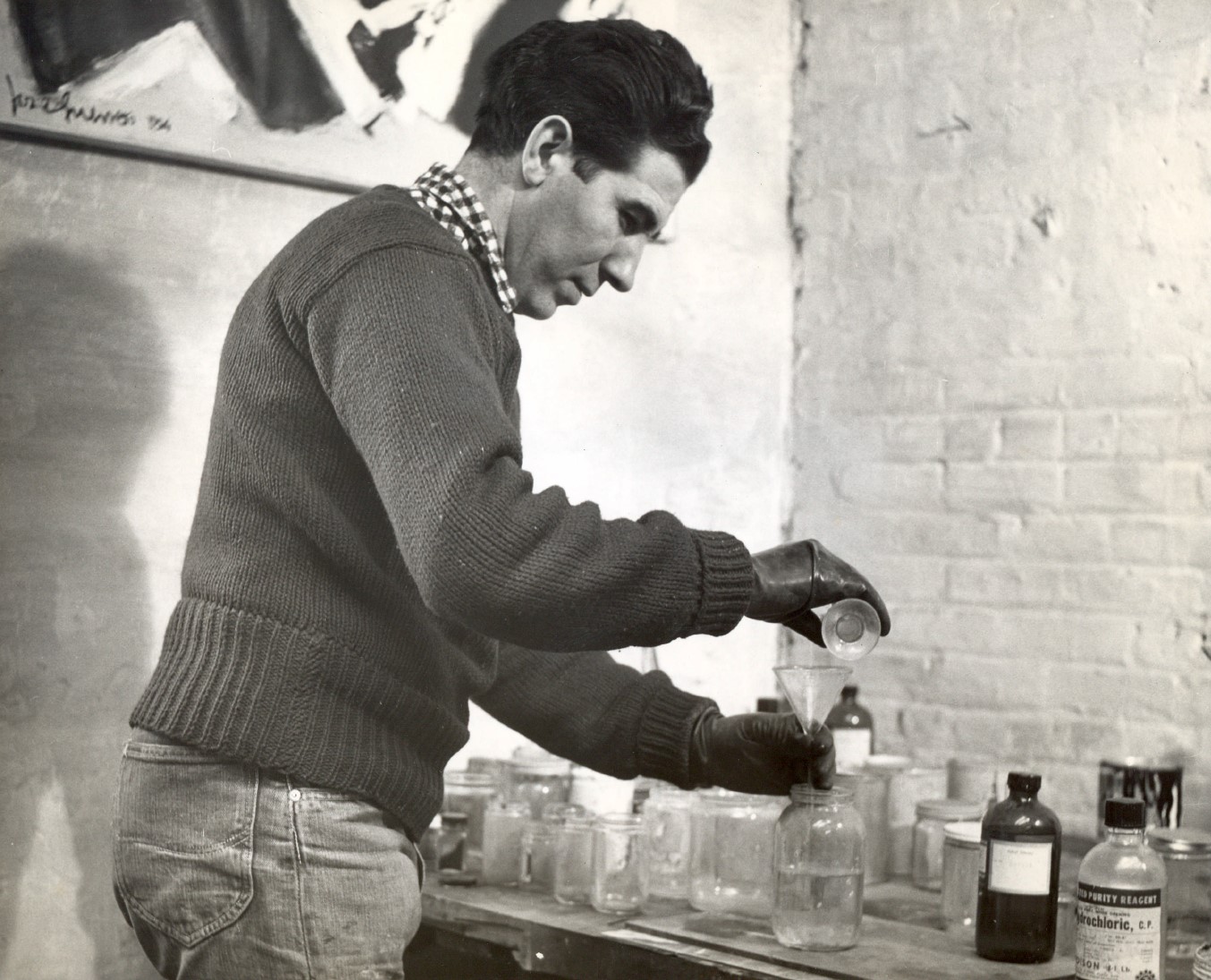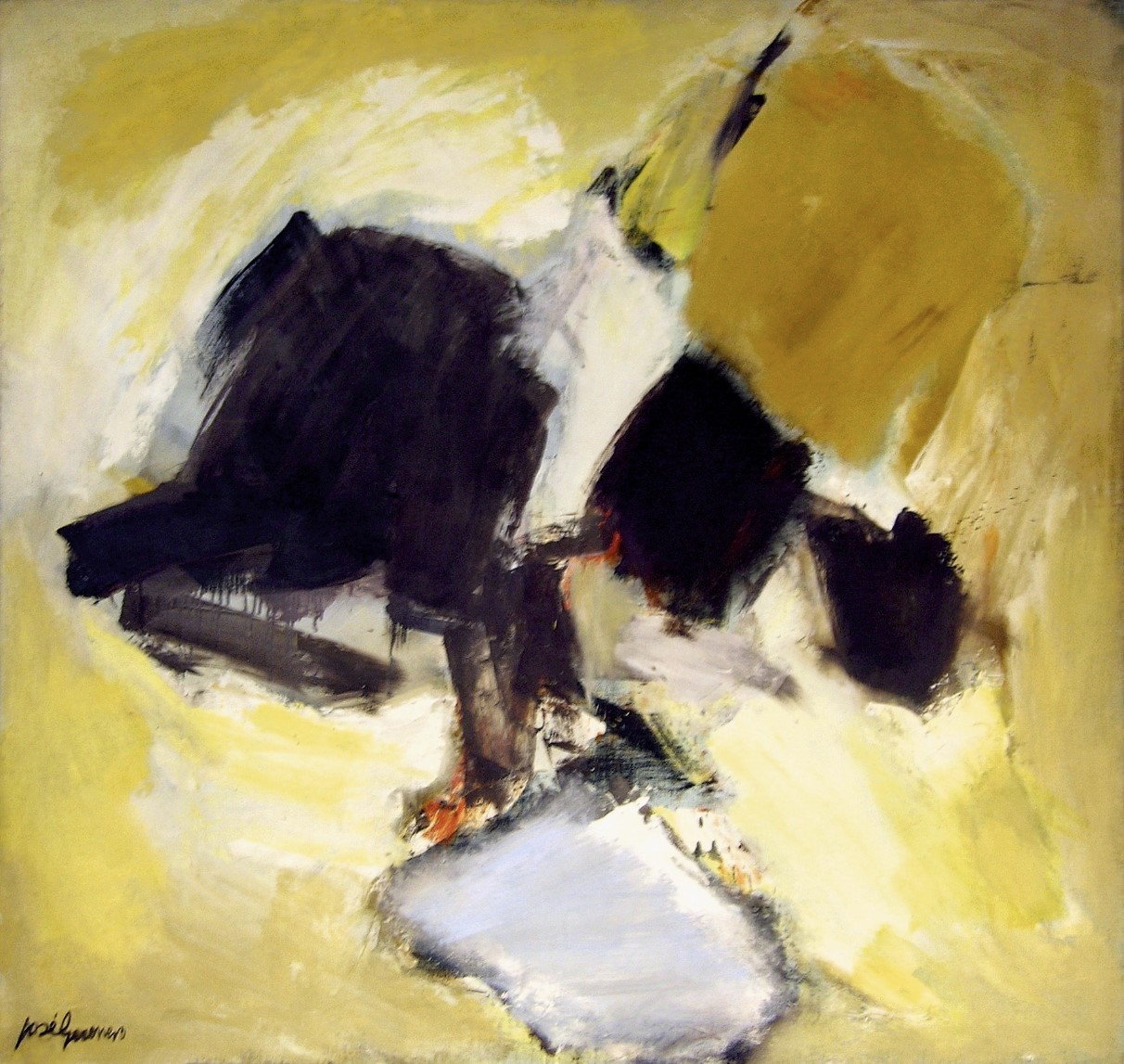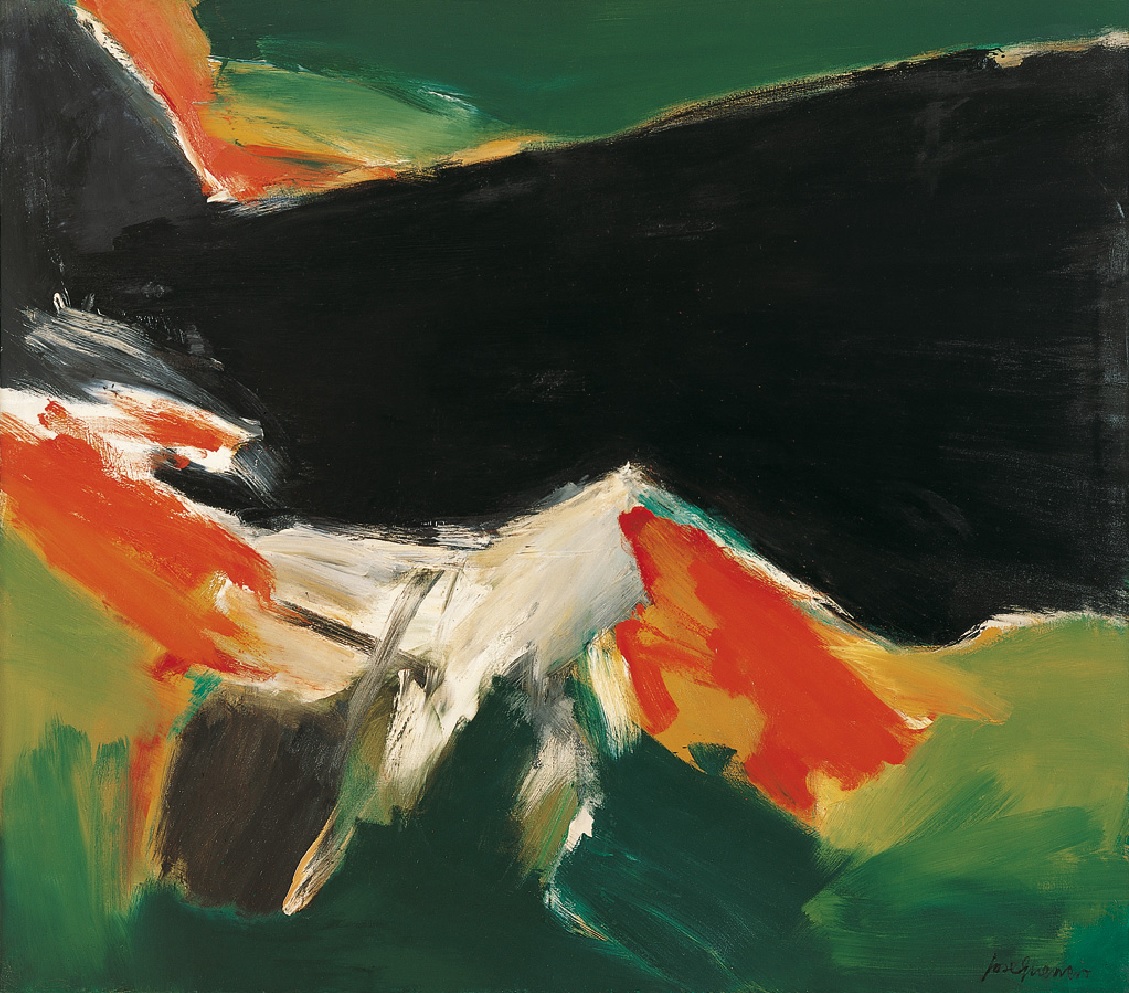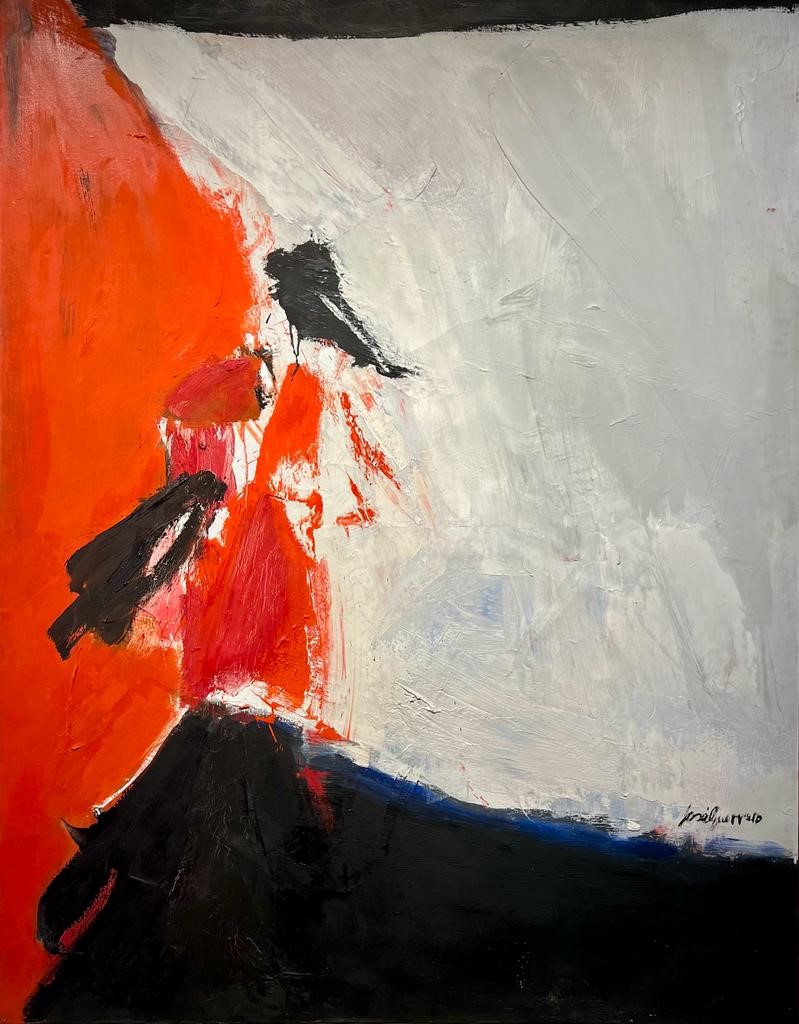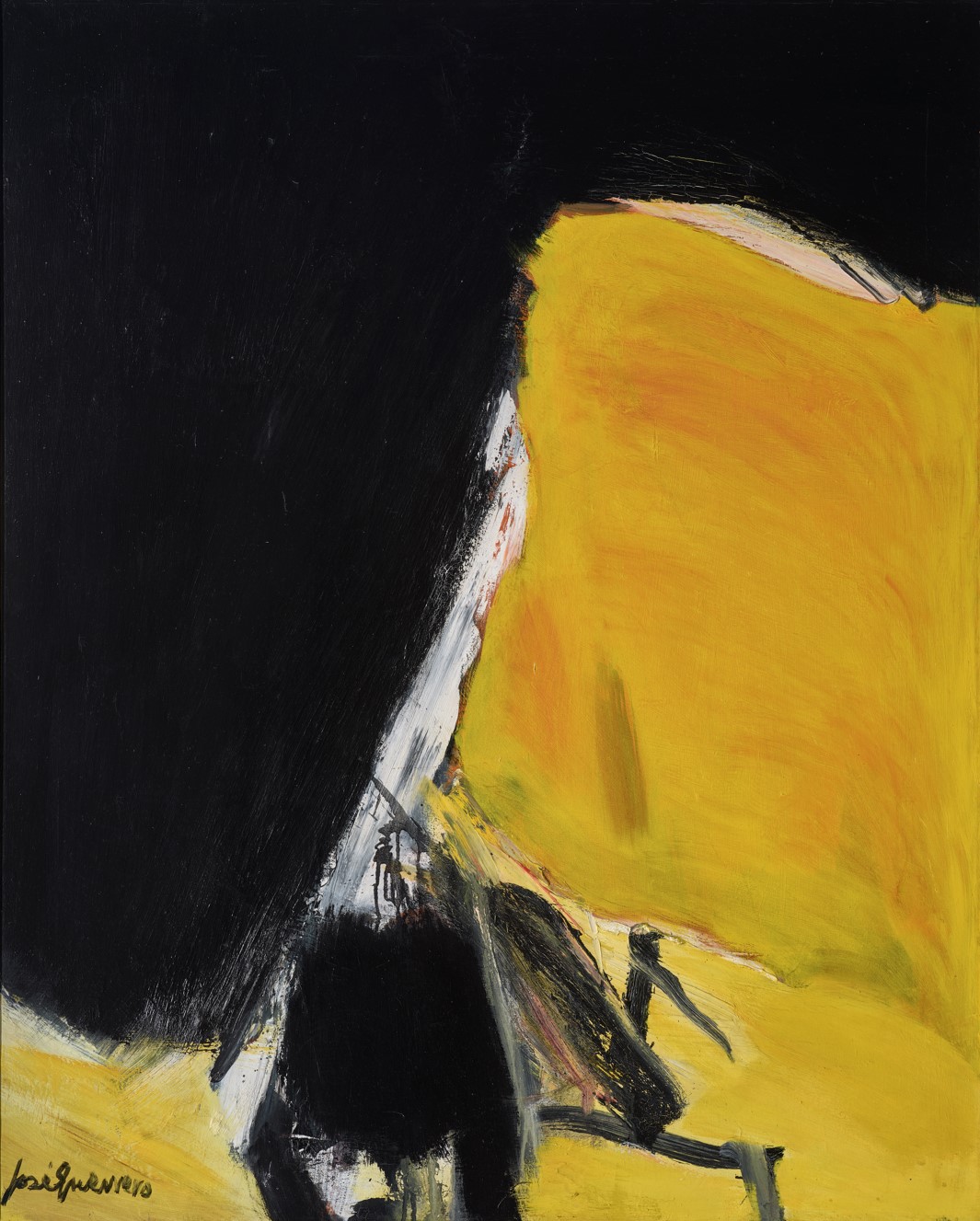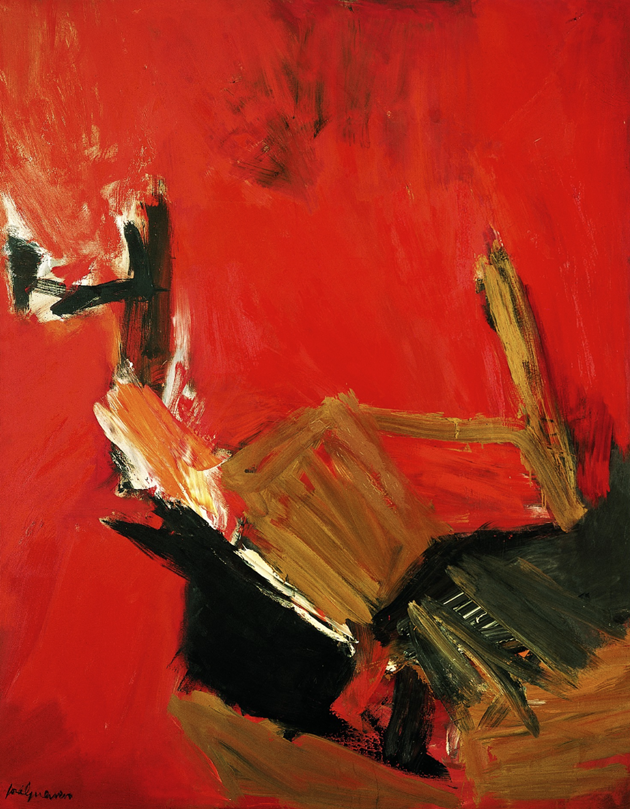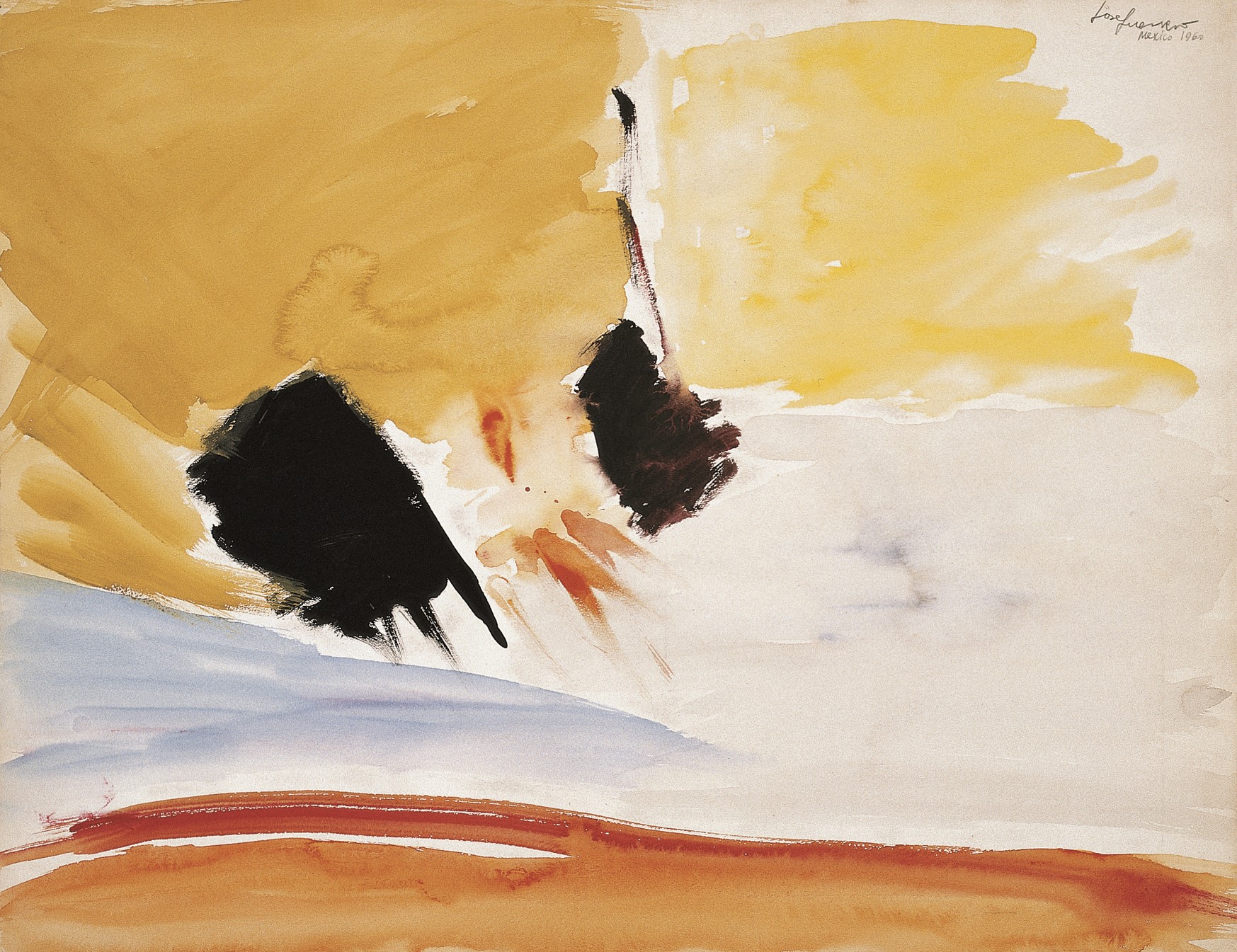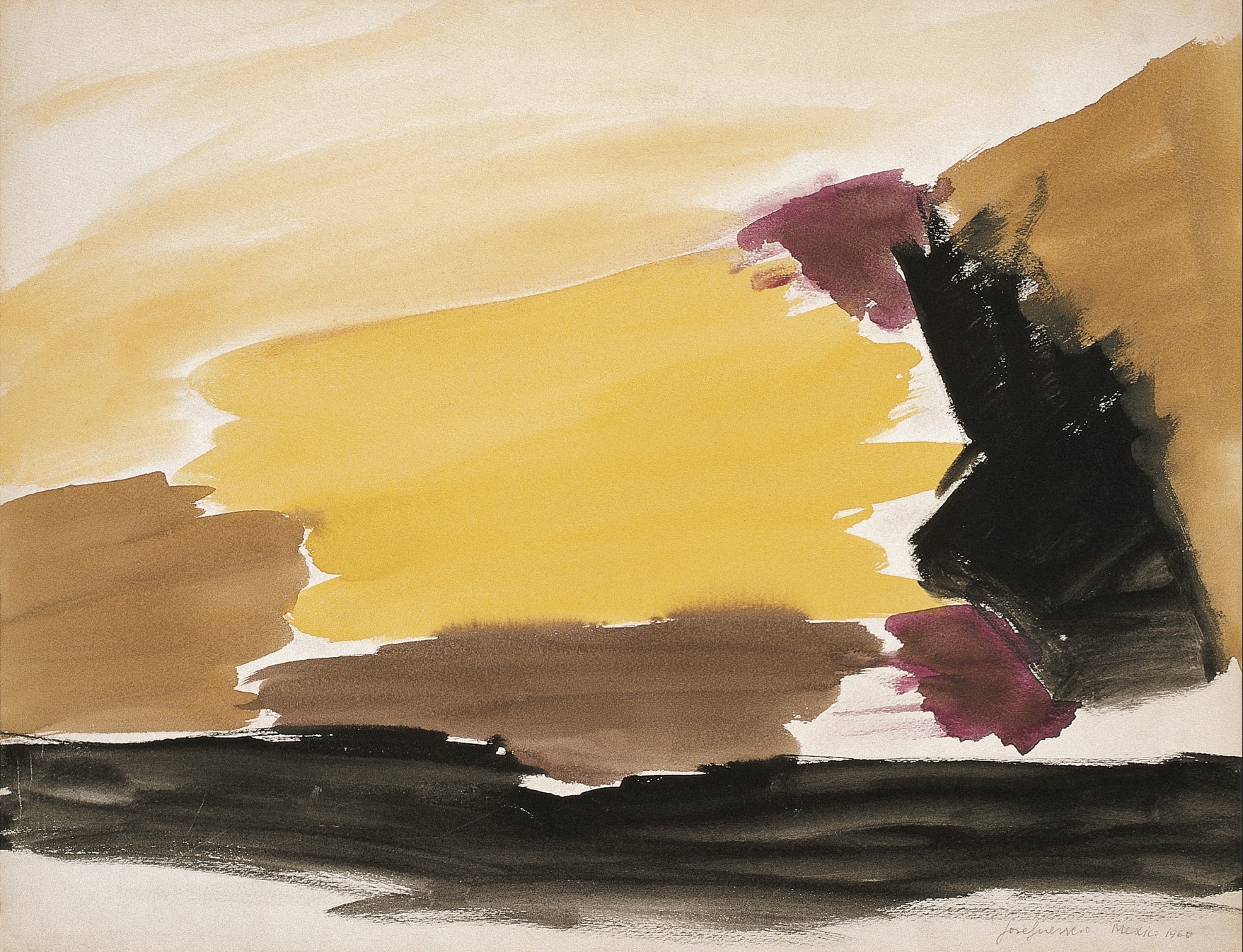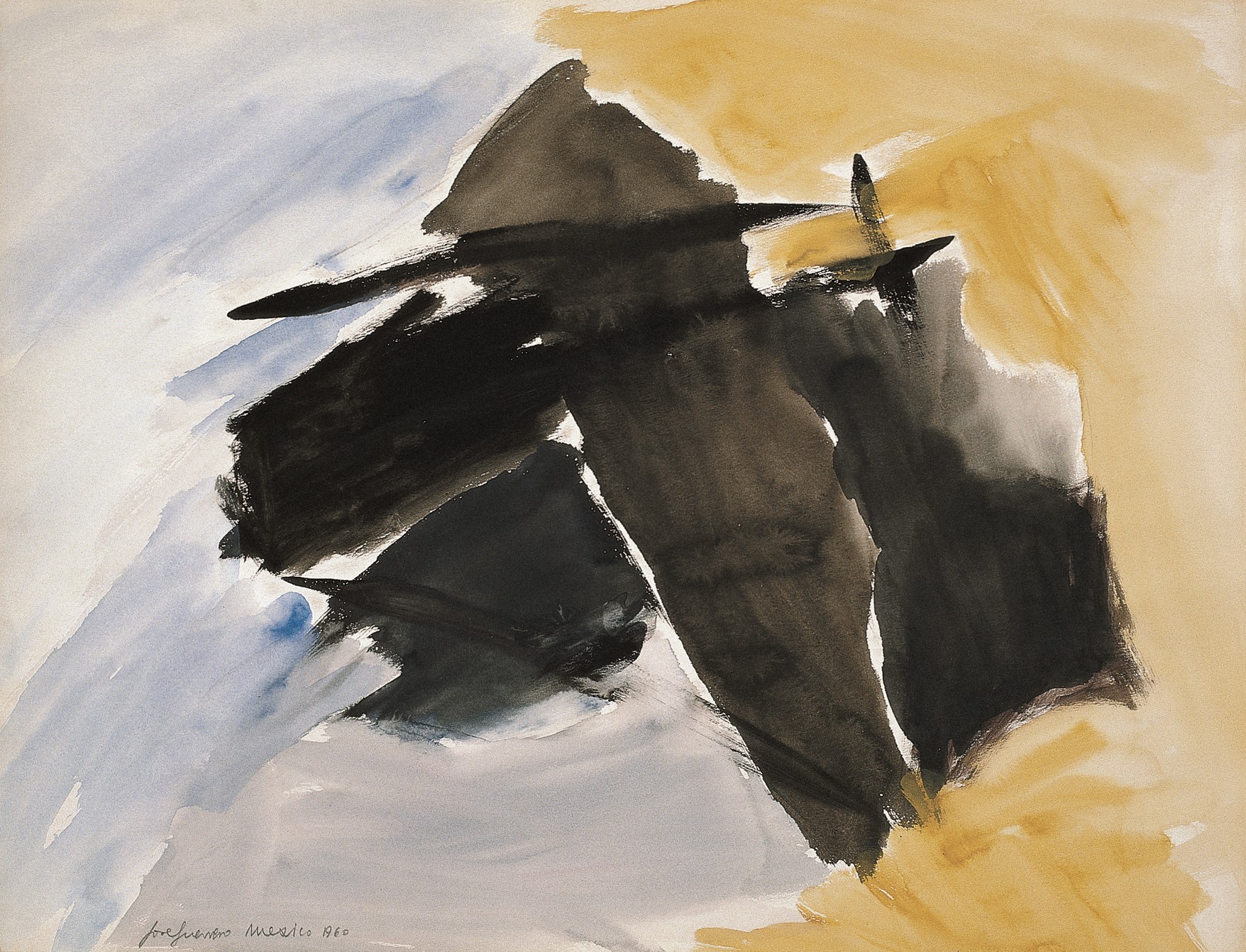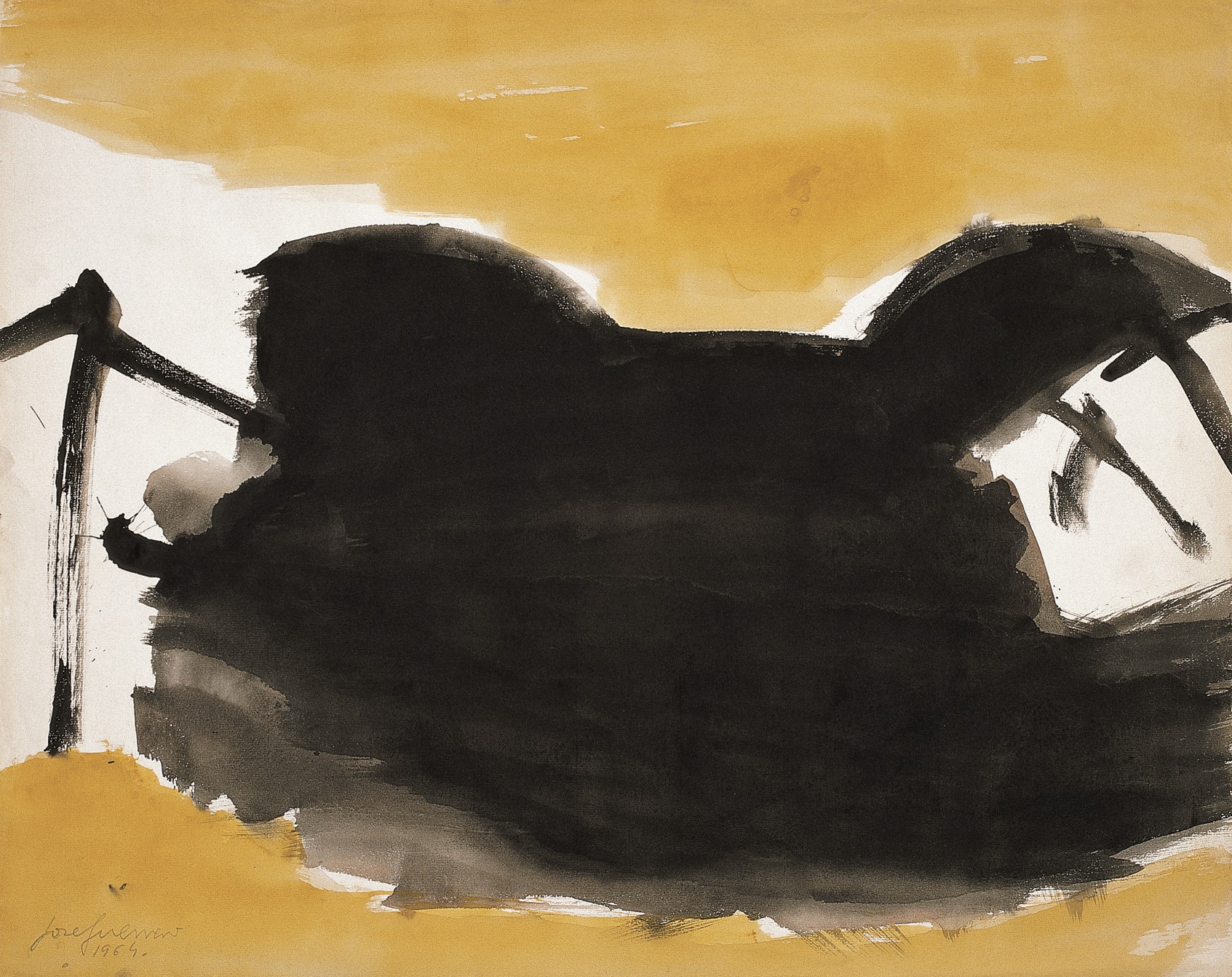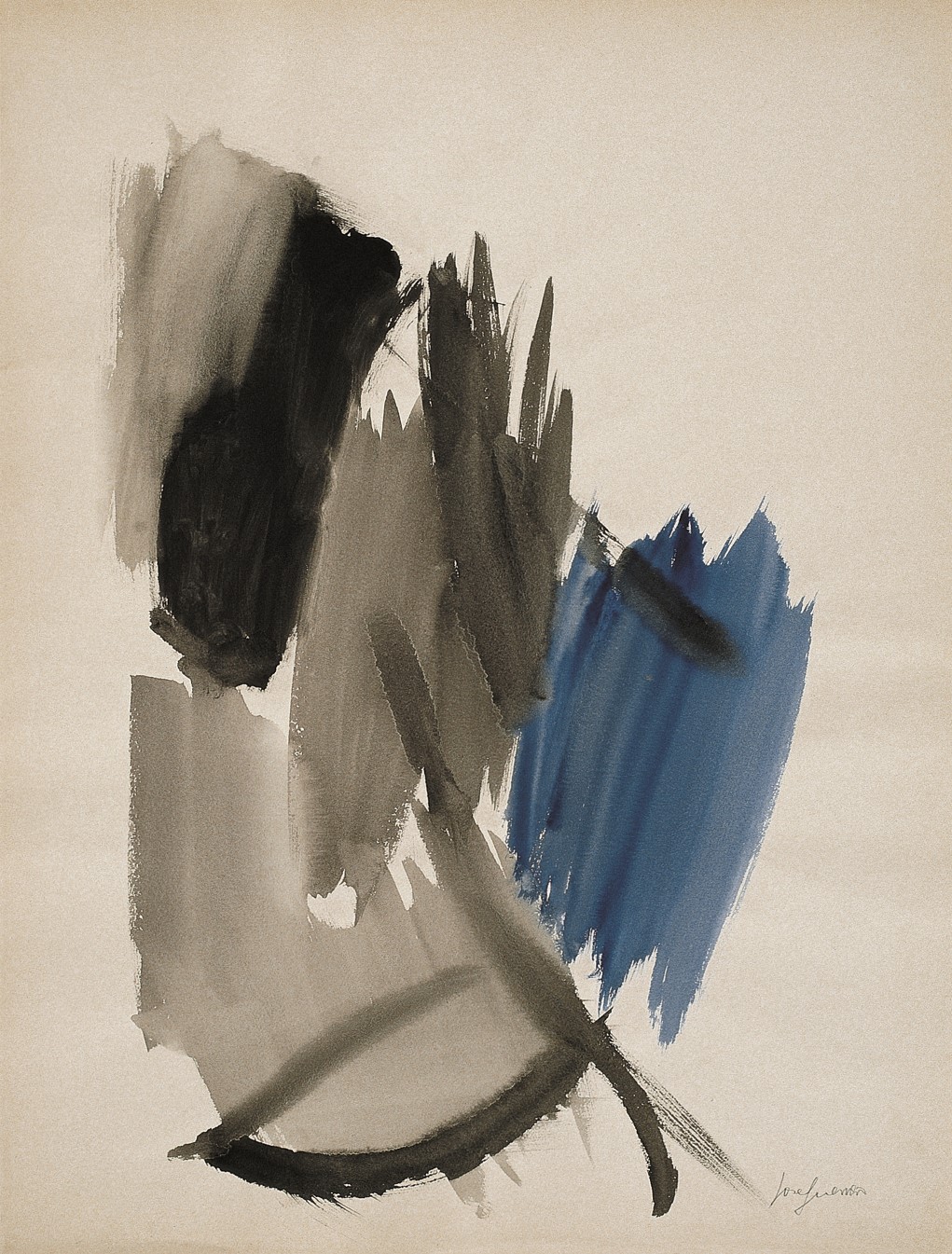We are pleased to present the fourth exhibition by José Guerrero (Granada, 1914-Barcelona, 1991) since the gallery has represented the Artist's Estate.

Focusing on a crucial moment in his career and in post-war Spanish art, the exhibition presents ten canvases and five papers made between 1953 and 1965, several of which had not been seen in public for more than six decades.

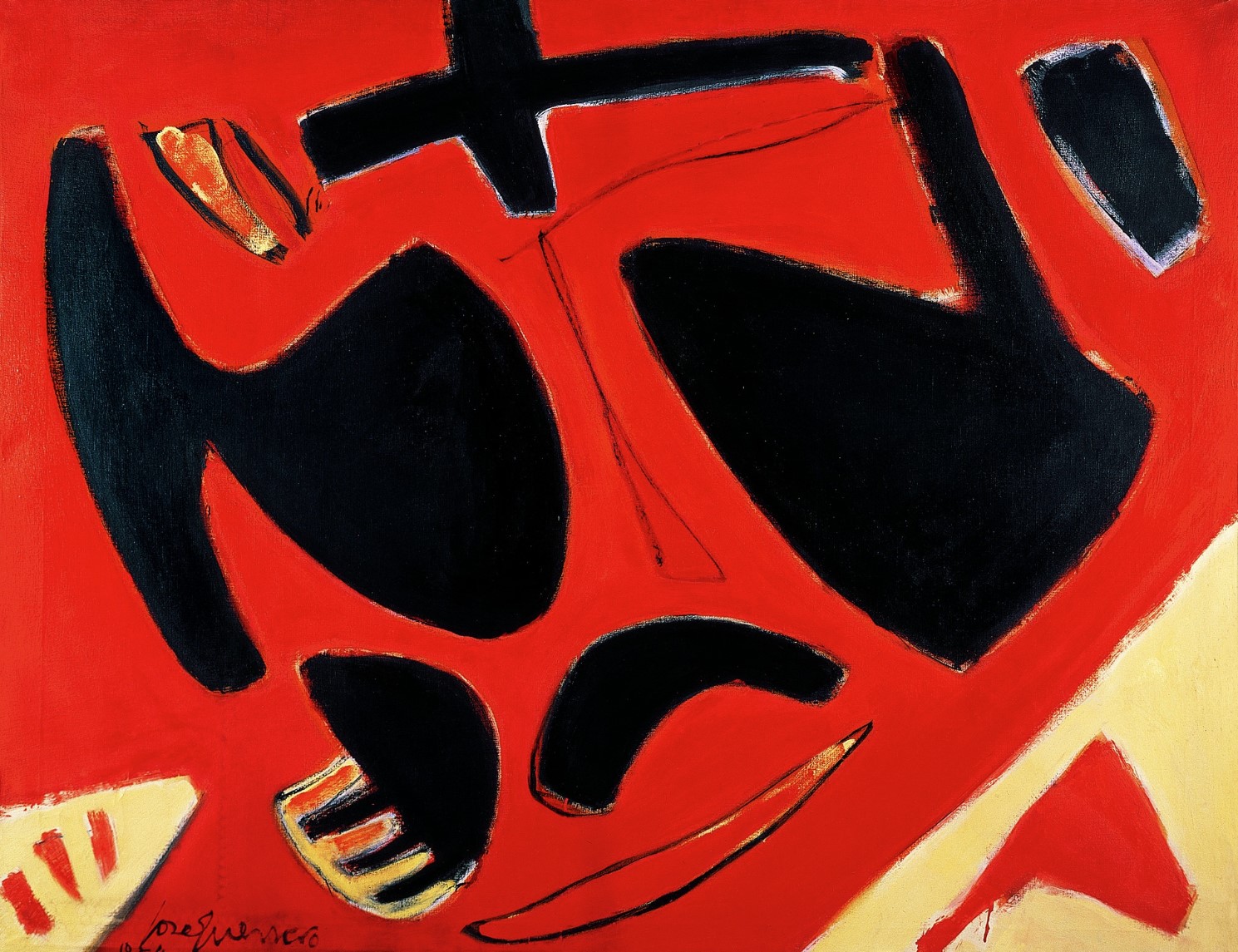
We propose a journey through Guerrero’s work, which spans a little more than a decade. The oldest canvas, Ocultos, from 1953, presents a set of black, curved elements of a “biomorphic” character [1], floating in space, which appear closed, as if compressed without having exploded, and which are still present in a somewhat later canvas: the monumental Signo (1954), a major work presented in the joint exhibition with Joan Miró at the Arts Club of Chicago, thanks to which he had his first solo exhibition in the famous Betty Parsons gallery in 1954, where he found “finally, his place in the art world” [2] and hung Signo again.
[1] Juan Manuel Bonet, Guerrero, la pintura necesaria, in the catalogue of the artist’s retrospective at the Museo Nacional Centro de Arte Reina Sofía, Madrid, 1994, p. 29.
[2] Francisco Baena, Biografía de José Guerrero, in the exhibition catalogue José Guerrero, the presence of black. 1950-1966, several locations, 2014-2015, p. 206.

Those closed forms, as if contained and dancing in space, which appear in his repertoire around 1950, will derive, by the hand of American painting and its more gestural, free and emboldened side, in an explosion or expansion of the black form on the canvas, which, as Yolanda Romero has pointed out very accurately [3], is often combined, at most, with one or two other colors, in addition to the omnipresent black, whose insistence in his work the painter himself attributed to his state of mind [4]: "Presencia del negro con amarillo" (1958) with white and earth; "Yellow and Brown" (1959) with yellow and ochre; "Ascendente" (h. 1963) with green and red... although there are exceptions, such as "El paño de Verónica" (1965-66), which was apparently painted only with black, red and white but which lets peek, at the bottom, a delicate blue area, in the purest style of his friend Kline.
[3] Yolanda Romero, José Guerrero: los años americanos, Íbidem, p. 28.
[4] On the use of black, we point out from Selección de escritos de Guerrero (by Marta González) the following, all in the catalogue of the artist’s retrospective at the Museo Nacional Centro de Arte Reina Sofía, Madrid, 1994, p. 109: “I had the black in me before Kline or Motherwell (…) My black is alive, it vibrates, it is transparent, it is not a dead black. The Spanish Negro is alive; you see him in the field (…) a woman in mourning, like me, another death, like my grandmother, my father, my brother (…)”.
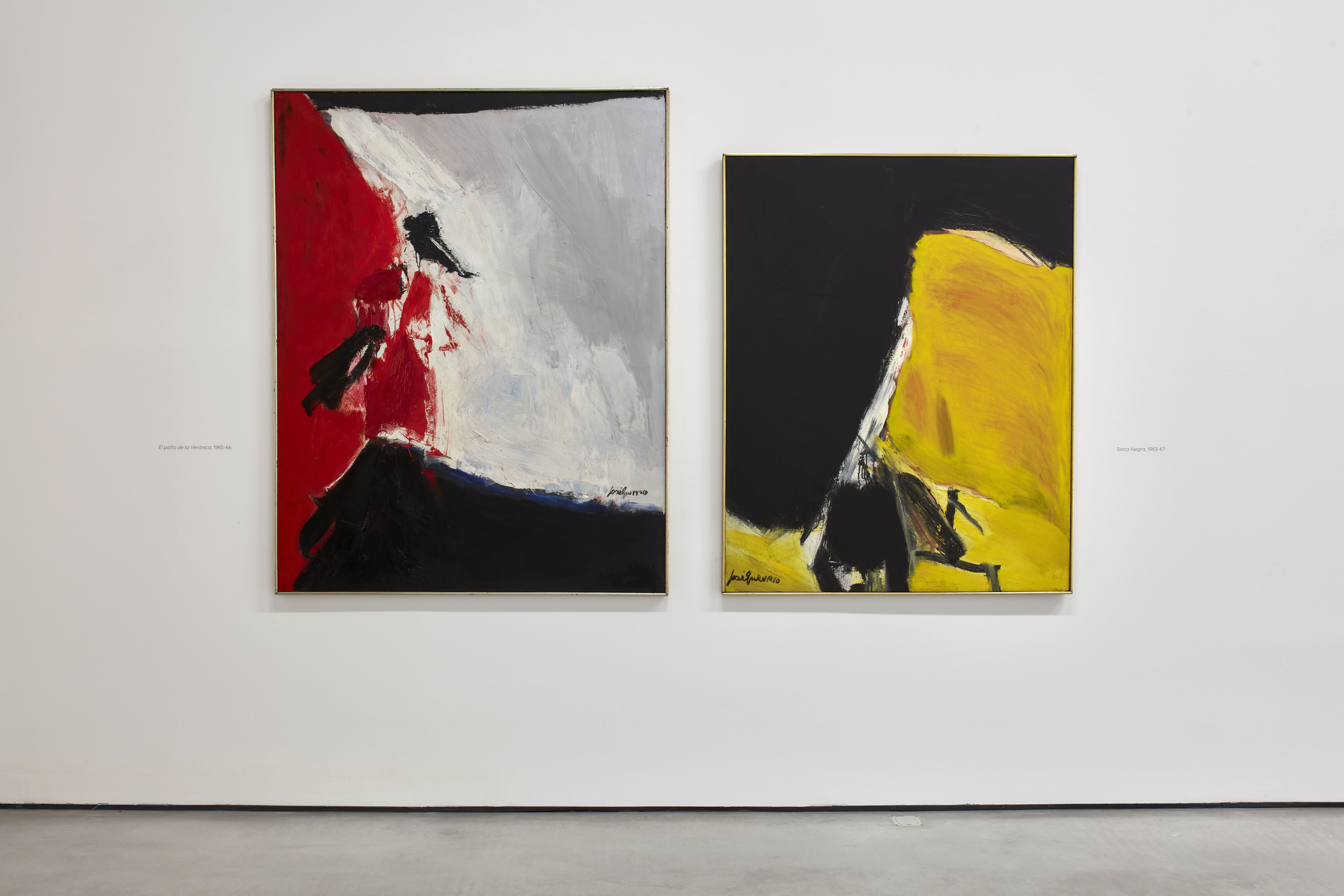

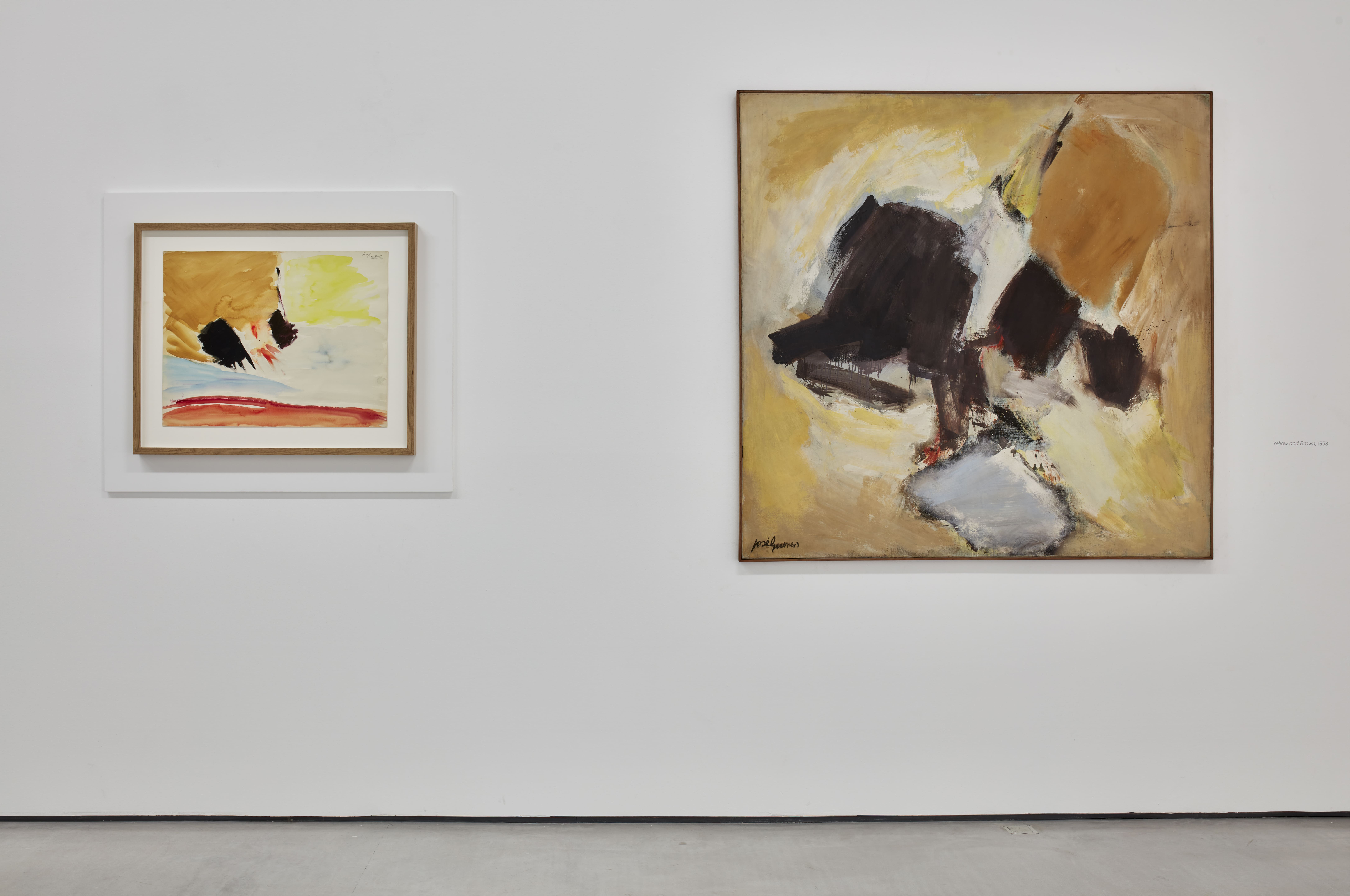
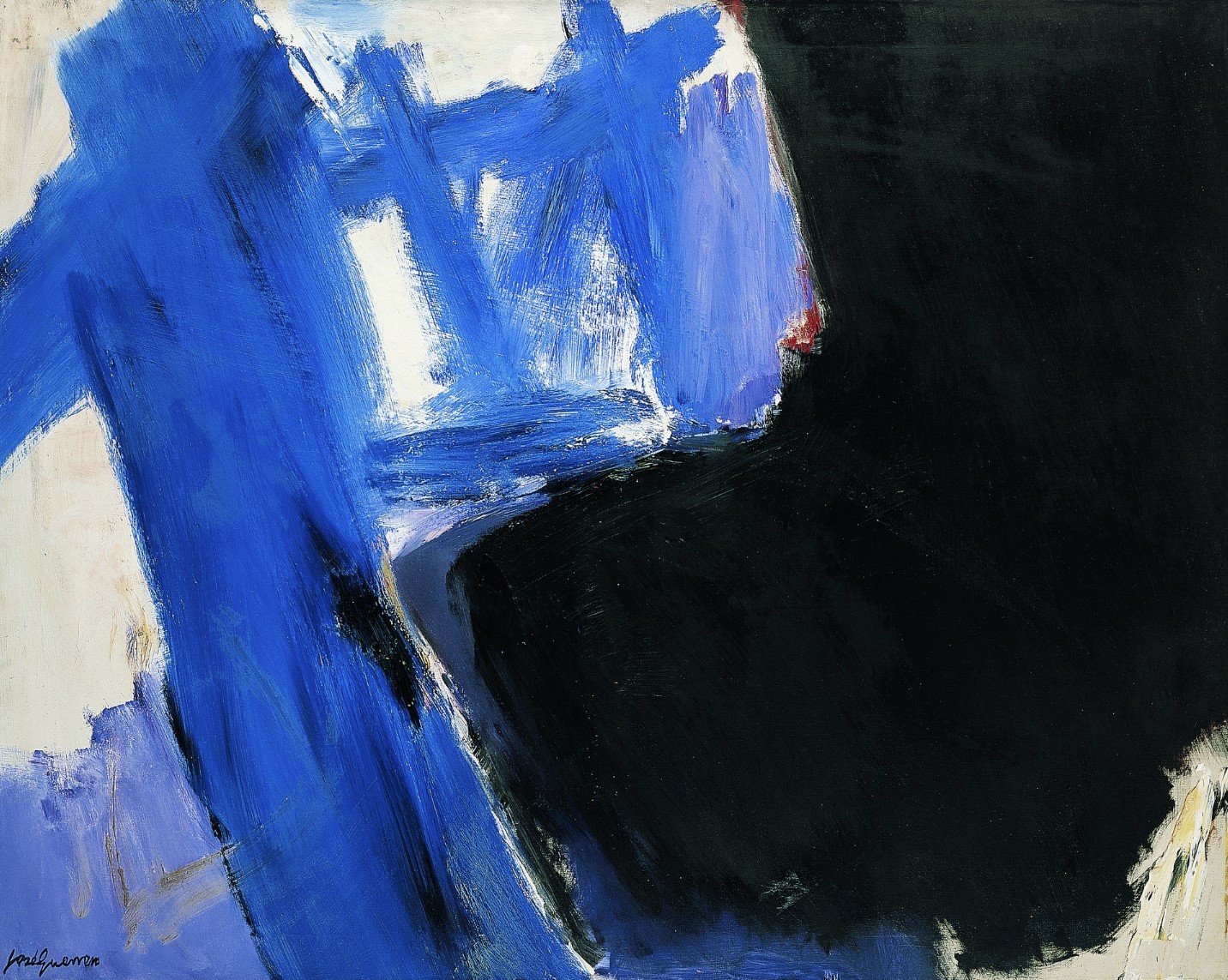
The forms, more open in the 60’s, now have the peculiarity of appearing in most cases also more contained. The artist himself expresses it this way: “I have always wanted to put the energy inside the painting. In this sense, my painting is not like that of the most genuine action painters, for whom the energy overflows the limits of the painting” [5]. This assertion has its exception in works as personal as the capital Homenaje a Kline (1962), with that black body that falls as a curtain on a very special canvas for Guerrero because of his friendship with Kline, or Torca negra (1963-7) with that same presence, but in the opposite corner of the canvas, or Bright passage (1960) and Ascendente (1963).
[5] Yolanda Romero, Op. cit., p. 30.

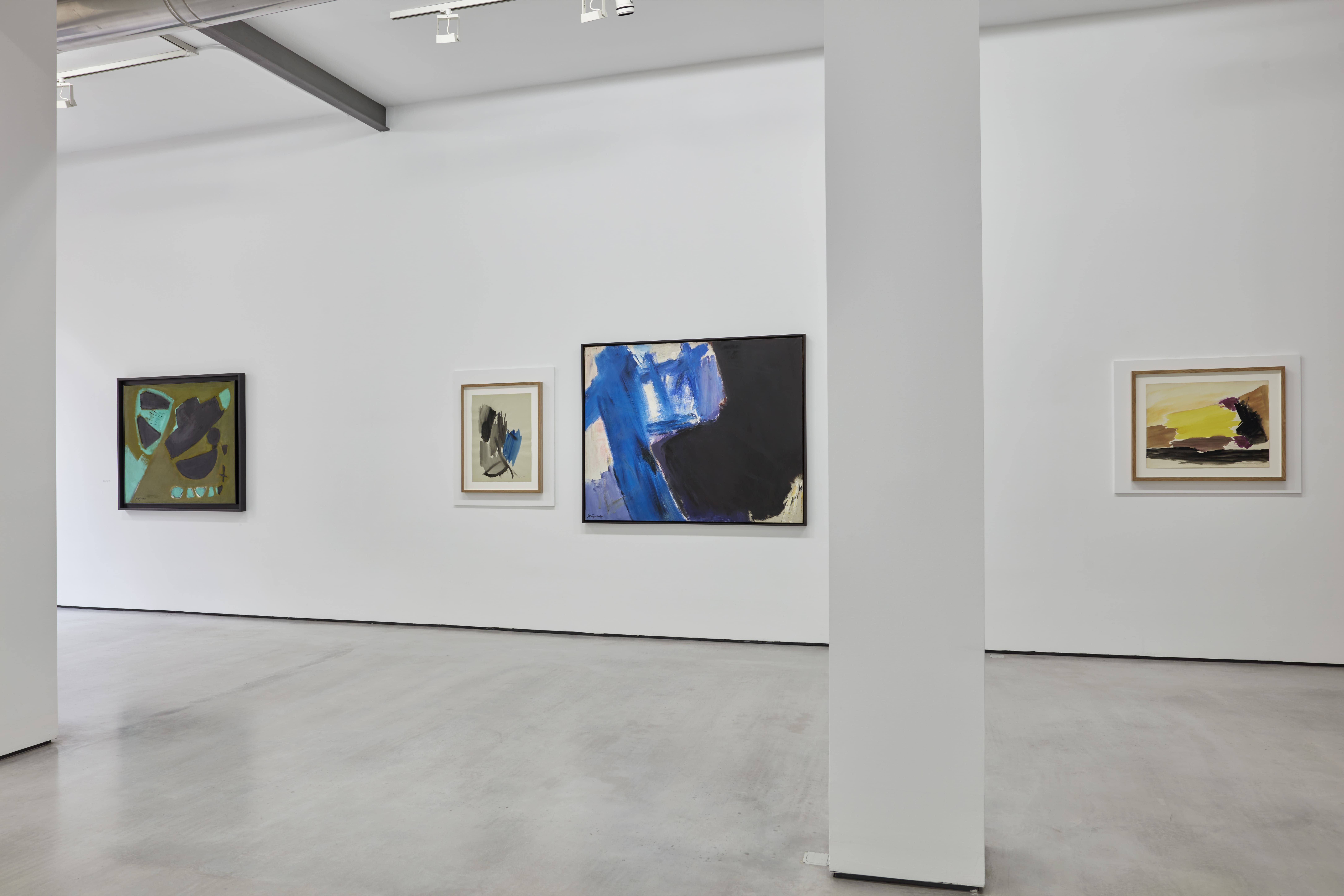
As noted, the exhibition culminates with several papers produced between 1953 and 1965, the year he returned to Spain.
Guerrero came in search of his roots; with increasingly clearer ideas, he held firmly to principles that gained approval and recognition in a favorable environment. The works of this stage reflect this self-affirmation, and at the same time explore new formal territories. The artist abandons the dispersion of his New York works and the tension is contained within the canvas itself. It is the characteristic feature of these years, he crystallized a work based on more concrete forms with suggestive colors such as purple and green, or looking for the fierceness of the primaries (Extremaduran reds, Mediterranean blues, desert yellows), or with some of the most subjugating shades of black we have ever seen.
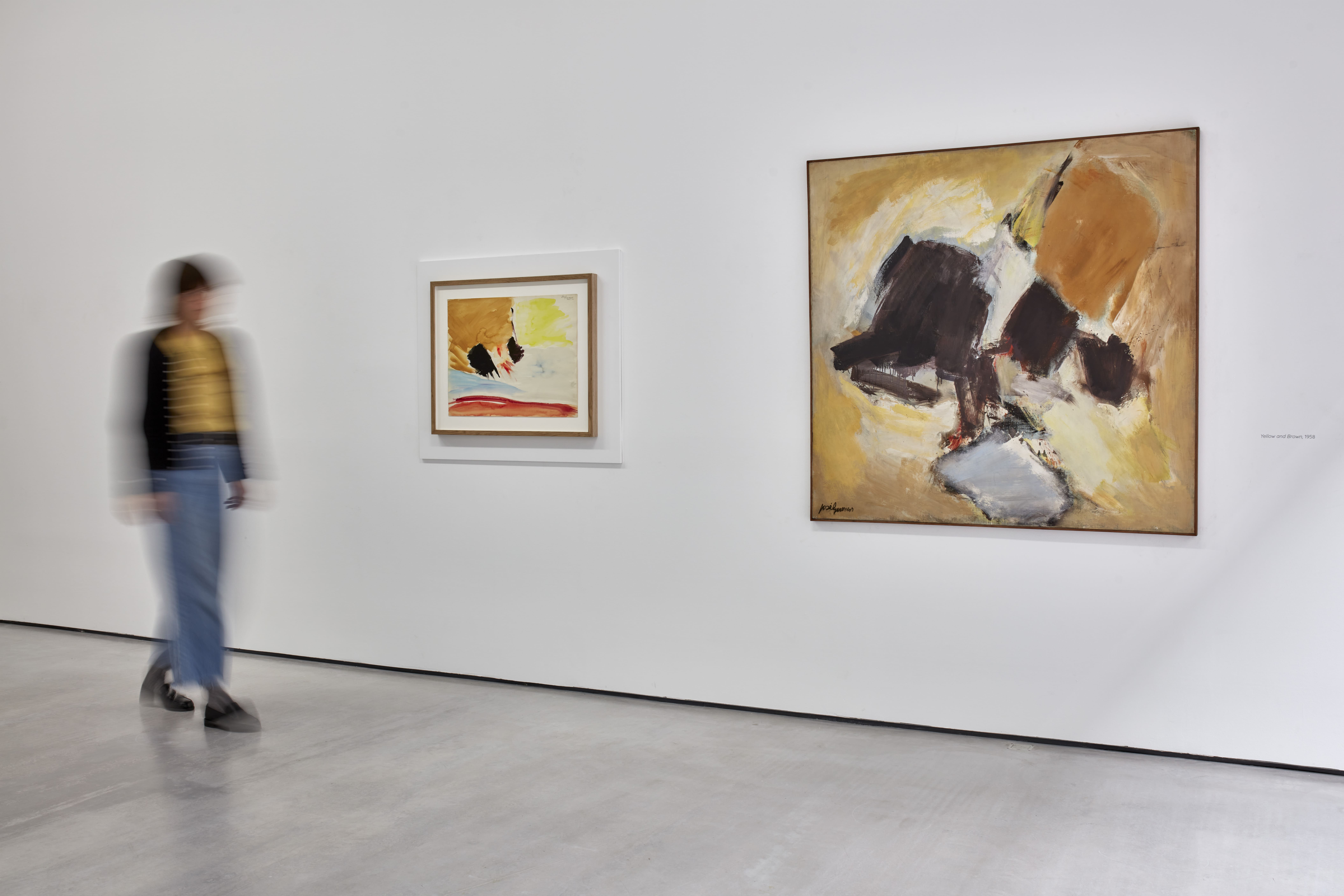
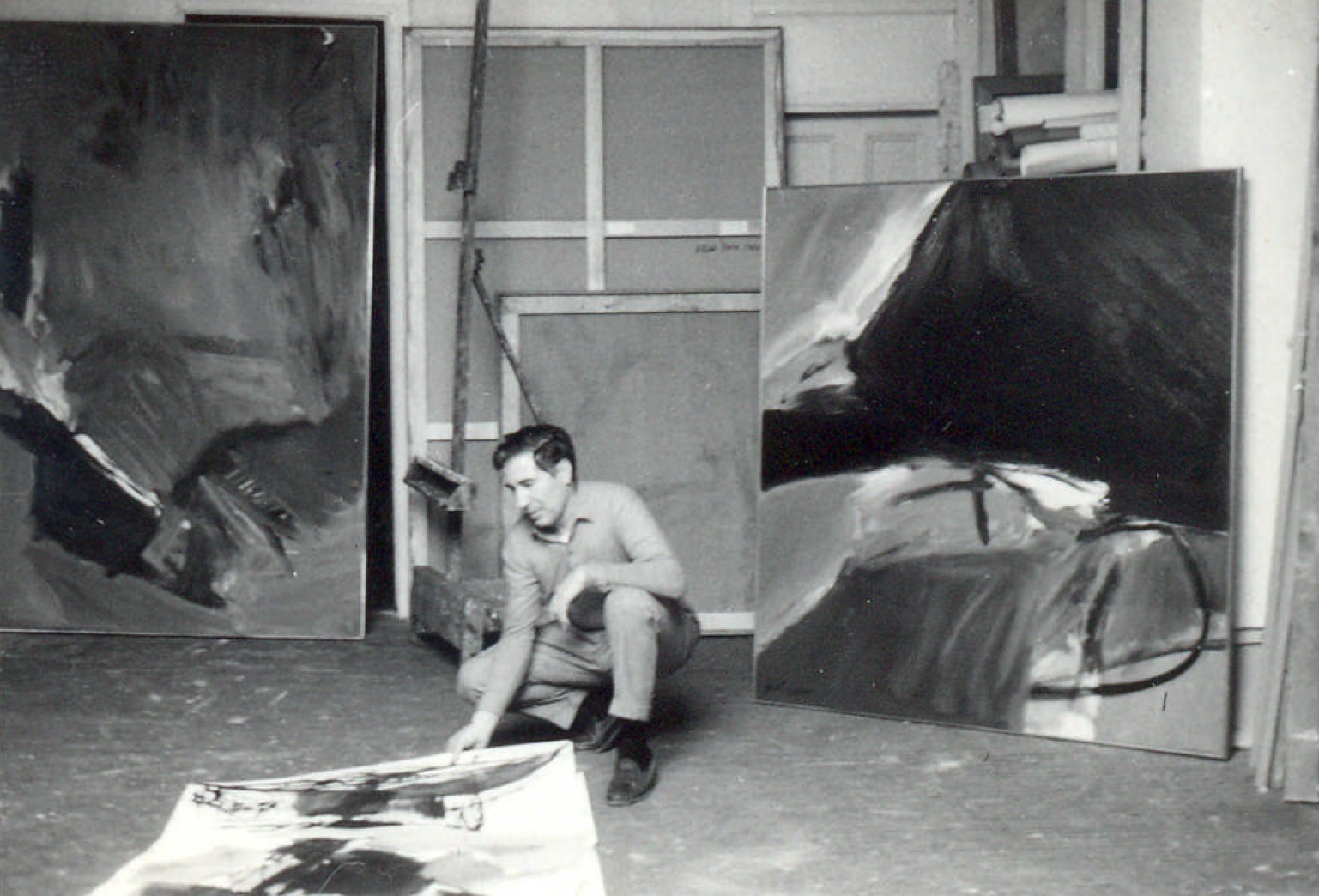
Guerrero’s work, which has a museum dedicated to him in Granada (Centro José Guerrero), is part of, among others, the Albright-Knox Art Gallery, Buffalo, New York; the Metropolitan Museum of Art, New York; the Museum of Fine Arts, Boston; the Museum of Modern Art, MoMA, New York; the Solomon R. Guggenheim Museum, New York; the Museo Nacional Centro de Arte Reina Sofía, MNCARS, Madrid; the Patio Herreriano, Museo de Arte Contemporáneo Español, Valladolid; the Museo de Arte Contemporáneo Helga de Alvear, Cáceres; and the Fundación Juan March, Madrid and Cuenca.
